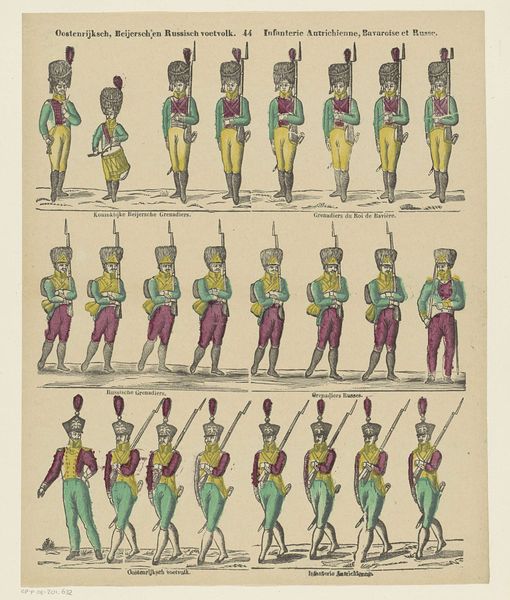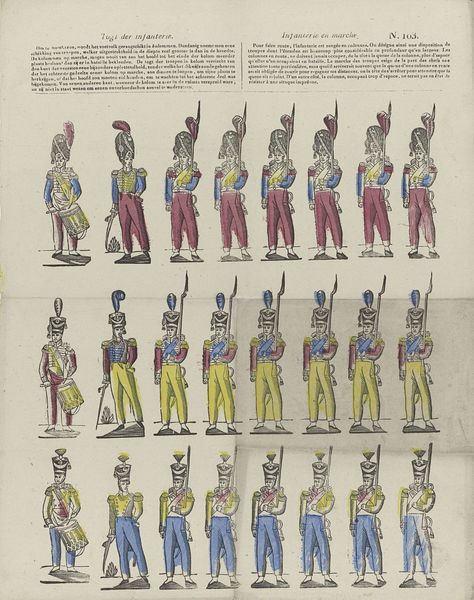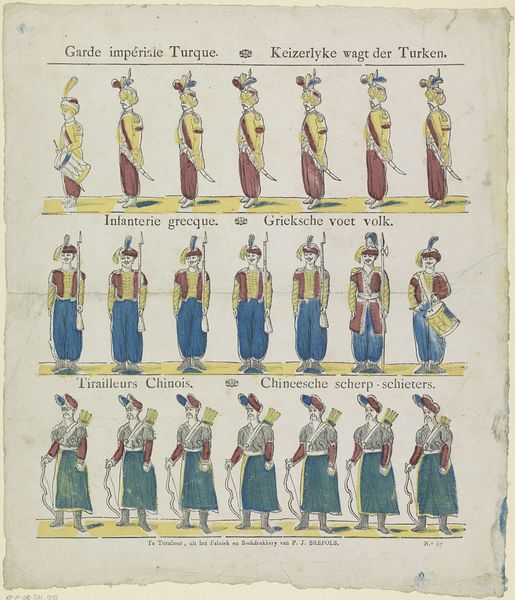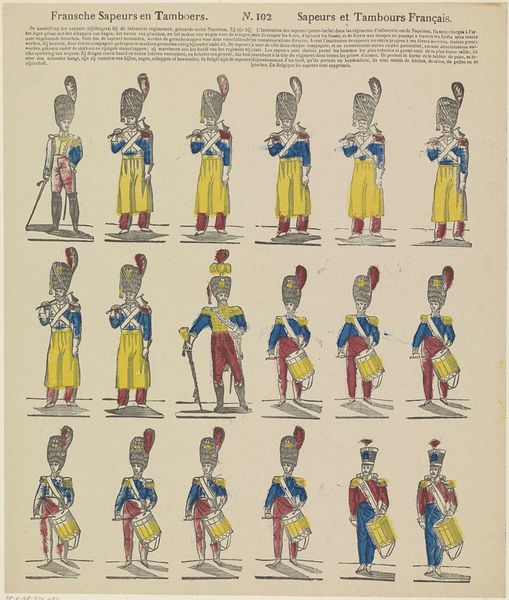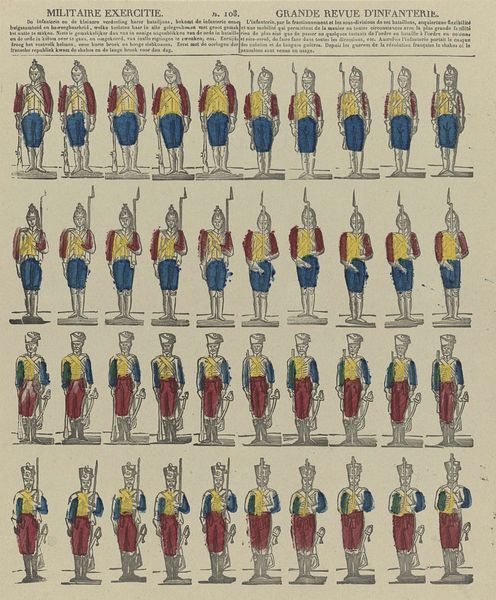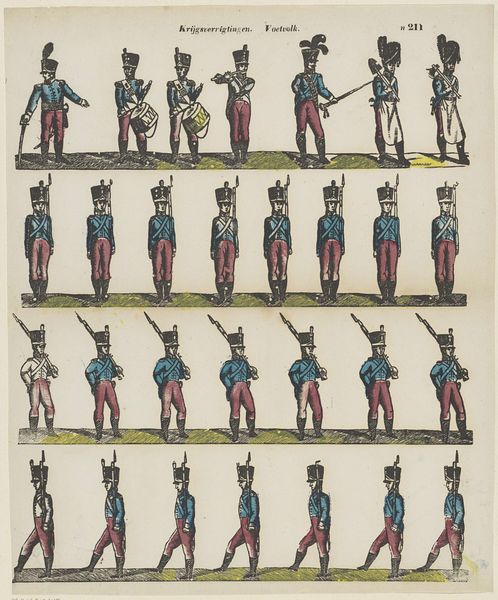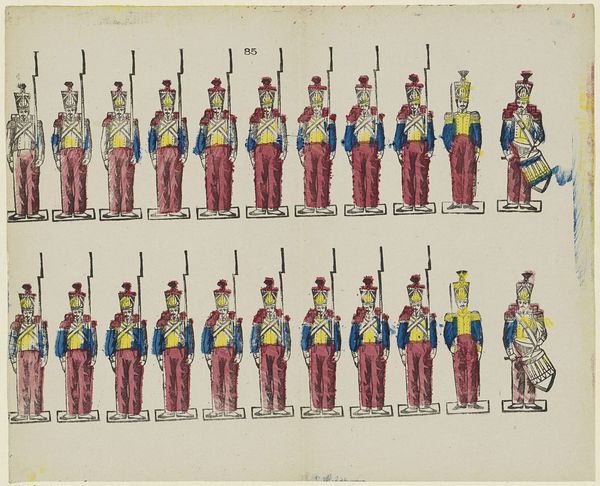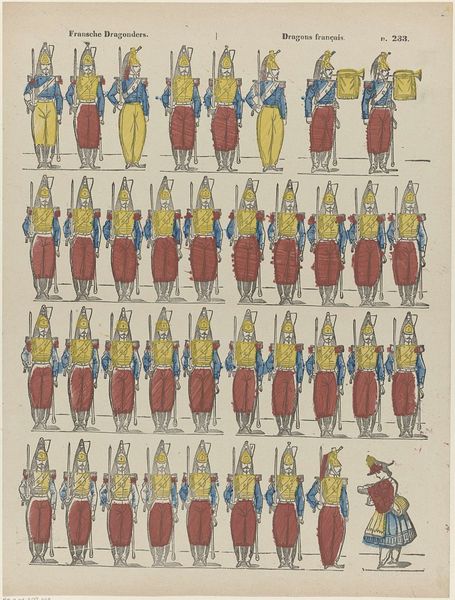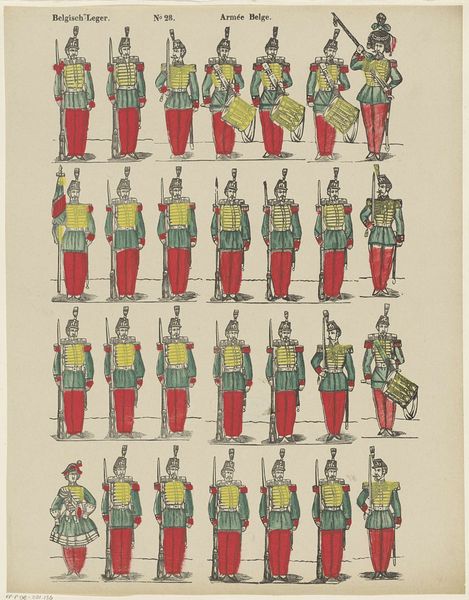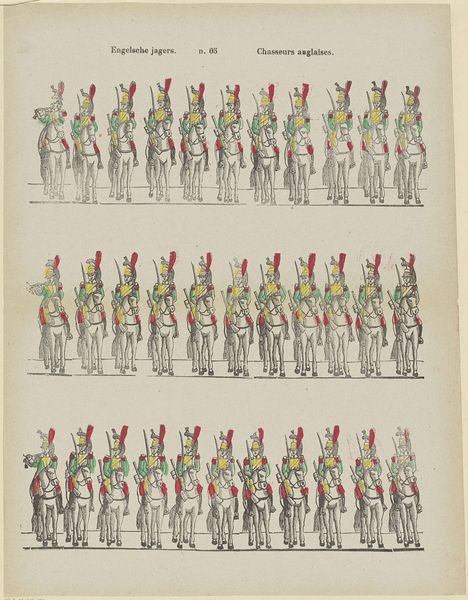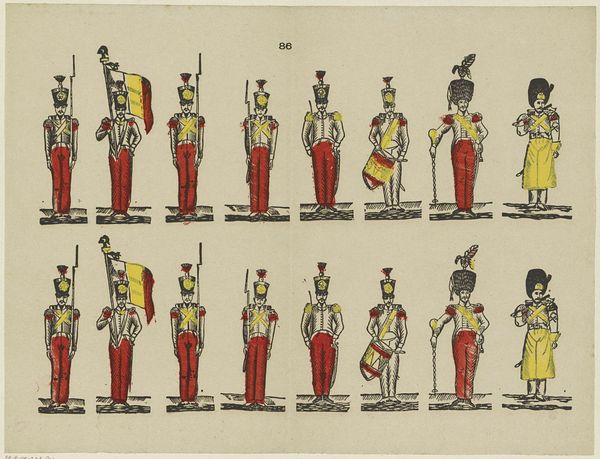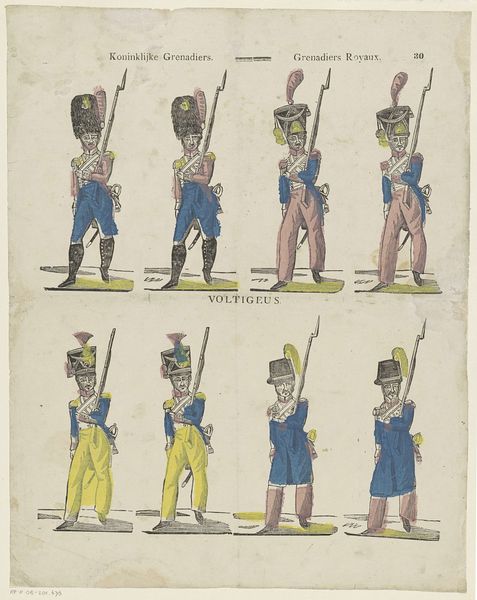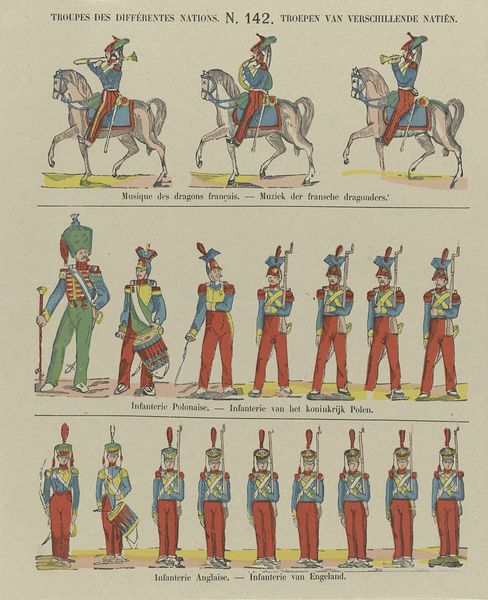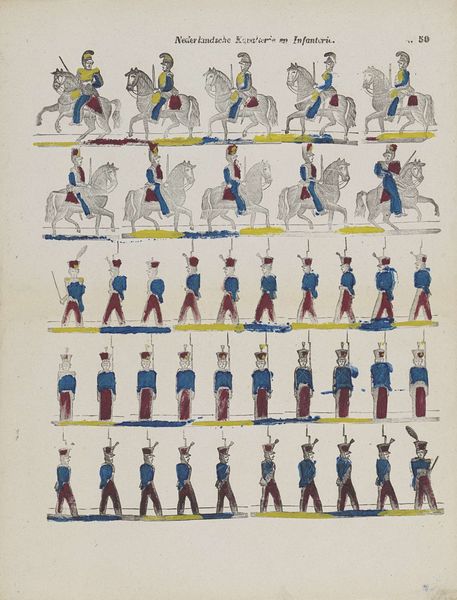
Oostenrijksch, Beijersch en Russisch voetvolk / Infanterie Autrichienne, Bavaroise et Russe 1800 - 1833
0:00
0:00
print, engraving
#
portrait
# print
#
figuration
#
history-painting
#
academic-art
#
engraving
Dimensions: height 417 mm, width 341 mm
Copyright: Rijks Museum: Open Domain
Editor: So, here we have a print titled "Oostenrijksch, Beijersch en Russisch voetvolk / Infanterie Autrichienne, Bavaroise et Russe" made sometime between 1800 and 1833 by Philippus Jacobus Brepols. It's an engraving depicting soldiers. The regimented rows of figures feel very much like a product of their time. What's your take on this? Curator: Well, as a materialist, my first thought goes to the printmaking process itself. Engravings like this weren't just about depicting soldiers; they were about mass production. Think about the labour involved. Someone had to meticulously carve that image into a metal plate. That plate then produced numerous, identical images. It's about efficiency and reproducibility driven by specific historical forces. Editor: That makes sense. It's not just an image; it's a commodity almost. The uniforms themselves suggest a sort of industrial standardization, too. Curator: Precisely! Consider the textiles used for these uniforms: where did that fabric come from? Who spun the yarn, who wove the cloth? Each element connects to wider economic and social networks and military power. Editor: So, by examining the material aspects, we move beyond simply identifying soldiers, and start thinking about the means by which their power was constructed and maintained. The paper it is printed on would itself come from a production line. How does understanding this as an object change our understanding? Curator: Exactly! This isn’t just art. It’s a historical document, a product of labour, and a reflection of a specific political and economic system which demanded efficient production. These prints normalized and visually enforced such control. The lines in the image demonstrate a line of control. Editor: It really shifts the focus. I always considered engravings for the final image, and rarely about the process that led to its production. Curator: And that’s why examining the materials and methods helps us understand the larger social and economic landscape. Every element of this work is the result of industrial practice and a visual reinforcement of these practices. Editor: That's a completely different way of thinking about art. Thanks, that really opened my eyes to its underlying function and processes.
Comments
No comments
Be the first to comment and join the conversation on the ultimate creative platform.
